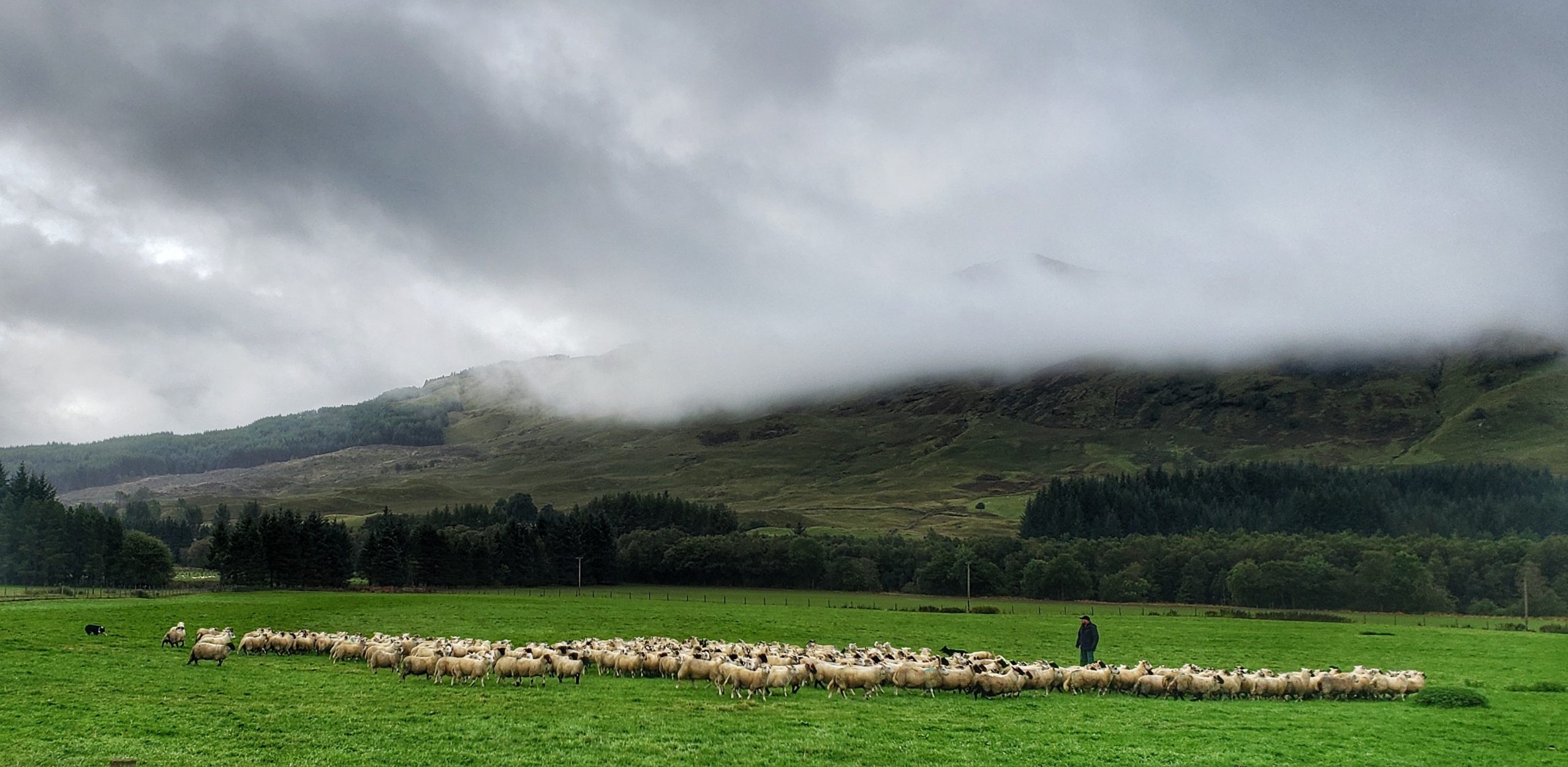Major Craig Calkins is the senior U.S. Army veterinarian for all of southern Europe, serving as the deputy commander for Veterinary Readiness Activity, Italy. But, 12 years into a decorated military career, Calkins still considers himself a Wyoming kid determined to find his way home.
In the meantime, he’s managed to do the next best thing: bring Wyoming resources abroad. Recently, that meant collaborating with two University of Wyoming faculty members to lead a livestock handling training for U.S. soldiers in Scotland.
Bucking convention
Calkins joined the Army as a veterinarian in 2012. When it came time to further his military career through specialized training, he chose an unconventional path: pursuing a rangeland ecology and watershed management degree at UW.
Having grown up in Wyoming, Calkins recognized the importance of understanding and managing agricultural land and livestock. Besides, after deploying to Kuwait, Iraq, Jordan, and Qatar, he was eager to return to his home state.
Why work with livestock?
During his time in the military, Major Calkins had observed that many Army veterinarians and animal care specialists, while accustomed to handling military working dogs, lacked experience with large animals like sheep and cattle. In 2022, he decided it was time to explore training options for U.S. soldiers under his tutelage.
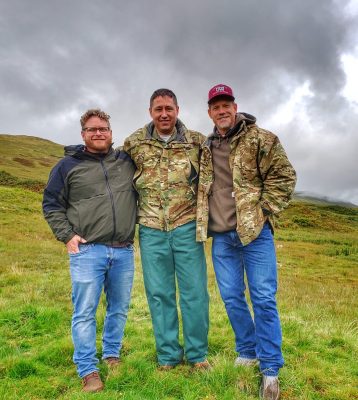
He knew exactly who to ask for assistance: his UW graduate advisor, rangeland management specialist Derek Scasta, and Whit Stewart, UW Extension sheep specialist.
It wasn’t the first time that Calkins had arranged for the Army Veterinary Corps to work livestock with UW faculty. In 2019, when he began his graduate research in rangeland ecology, Calkins recruited the 438th Medical Detachment (Veterinary Service Support) from Fort Carson, Colorado, to help draw blood from UW cattle.
The purpose of his research was to analyze how factors like blood-clotting times, hide thickness, elevation, and environmental conditions affect hornfly parasitism. These insects are the most economically damaging external parasite of cattle in the U.S., and the project meshed well with Calkins’ veterinary experience and interest in livestock production.
It turns out that collecting baseline data for his research project was also a key learning experience for the 438th Medical Detachment. In other settings, Calkins had noticed that by the time a group of soldiers got comfortable working with large animals, it was time to pack up and head home. Not so at the Laramie Research and Extension Center. There, the sheer volume and repetition associated with collecting hundreds of blood samples and running hundreds of ultrasounds proved to be an invaluable training exercise.
That’s not the only advantage of working with large agricultural animals, Calkins says. For example, physical examinations of cattle and sheep provide an opportunity for soldiers to detect and treat internal parasites. That’s an experience they might not have in a clinic that primarily sees military working dogs and service members’ pets, which receive monthly preventatives.
“I genuinely believe that working with agricultural animals—large animals—is the recipe for success for building competencies in the small animal clinic,” Calkins concludes.
International relevance
In addition to honing translatable veterinary skills, familiarity with livestock and agricultural systems may benefit soldiers serving in international conflict zones, whether to help sustain their units or provide humanitarian aid. “As we continue to shift from counterinsurgency operations to large-scale combat operations, vet services need to be familiar with livestock operations,” says Calkins.
For example, soldiers deployed to eastern Europe might be tasked with procuring sheep to feed their division, Stewart explains. That might require building a temporary corral, purchasing sheep, moving the animals, and coordinating with a local harvest facility.
But, in order to successfully complete such tasks, the soldiers would need to understand the basics of livestock handling and care.
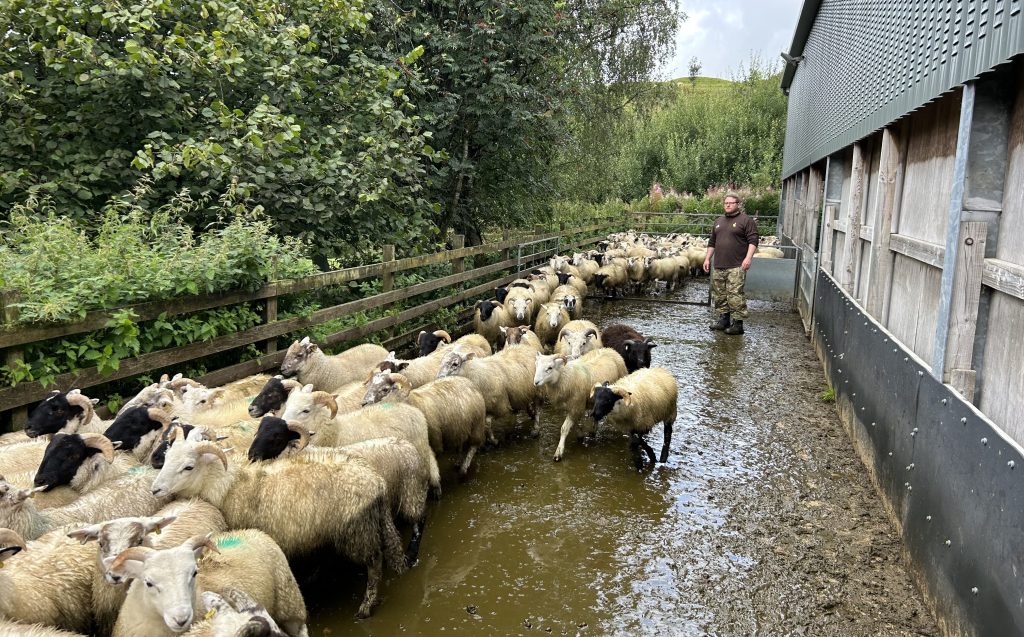
Civilian service
That’s where Stewart and Scasta came in. After some brainstorming about potential partners, they reached out to Scotland’s Rural College (SRUC) in Edinburgh to arrange a training in August 2022. In cooperation with SRUC faculty and staff, Calkins and the two UW Extension specialists developed a multi-day educational program for 33 U.S. Army soldiers stationed in Italy, the United Kingdom, Germany, Turkey, and Spain.
“I brought all these subject matter experts with me instead of being a jack of all trades, master of none. I think that was the key to success,” Calkins reflects. “Whit and Derek are teachers—they can get messages across and work well with different learning styles.”
The hands-on training, which focused on handling, caring for, and physically evaluating sheep and dairy cattle, took place at SRUC’s Hill & Mountain Research Centre in the Scottish Highlands.
“It brought in all three parts of the land-grant university—extension, research, and teaching,” says Scasta. “The patriotism of supporting soldiers is pretty cool, and it’s a bit of an unusual opportunity. These soldiers are abroad sacrificing time with family, sometimes in very difficult places, to try to help provide stability and food security globally.”
The first training of its kind
The Scotland training was designed primarily for animal care specialists, Army personnel who serve as veterinary technicians. In addition to caring for military dogs, animal care specialists must demonstrate competency in livestock-specific tasks.
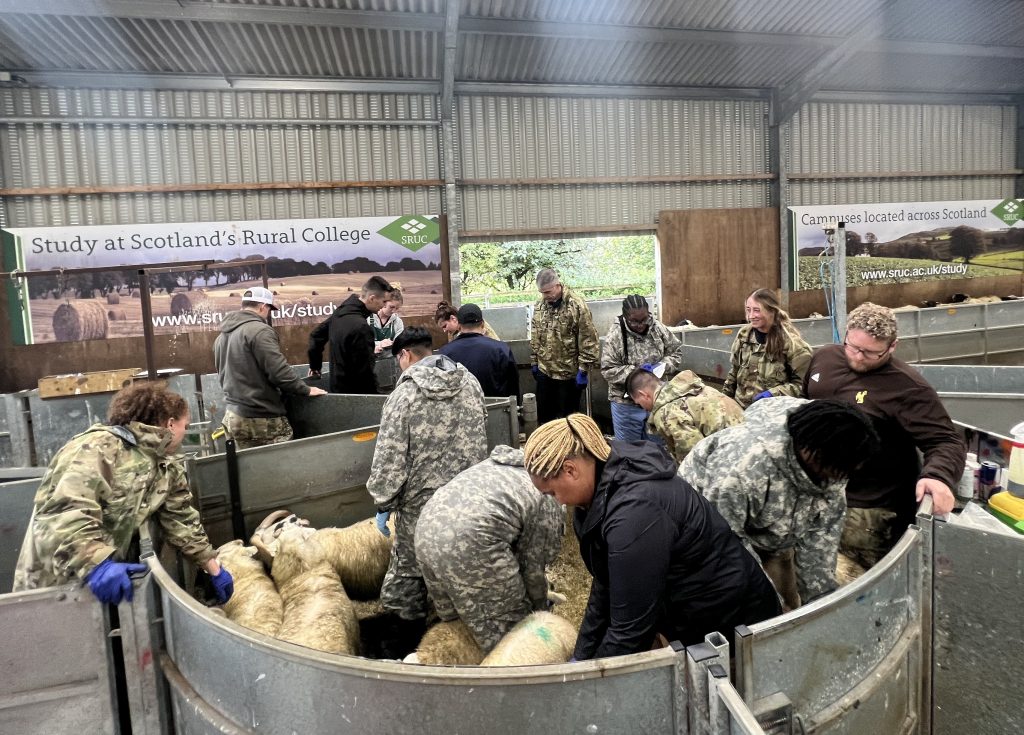
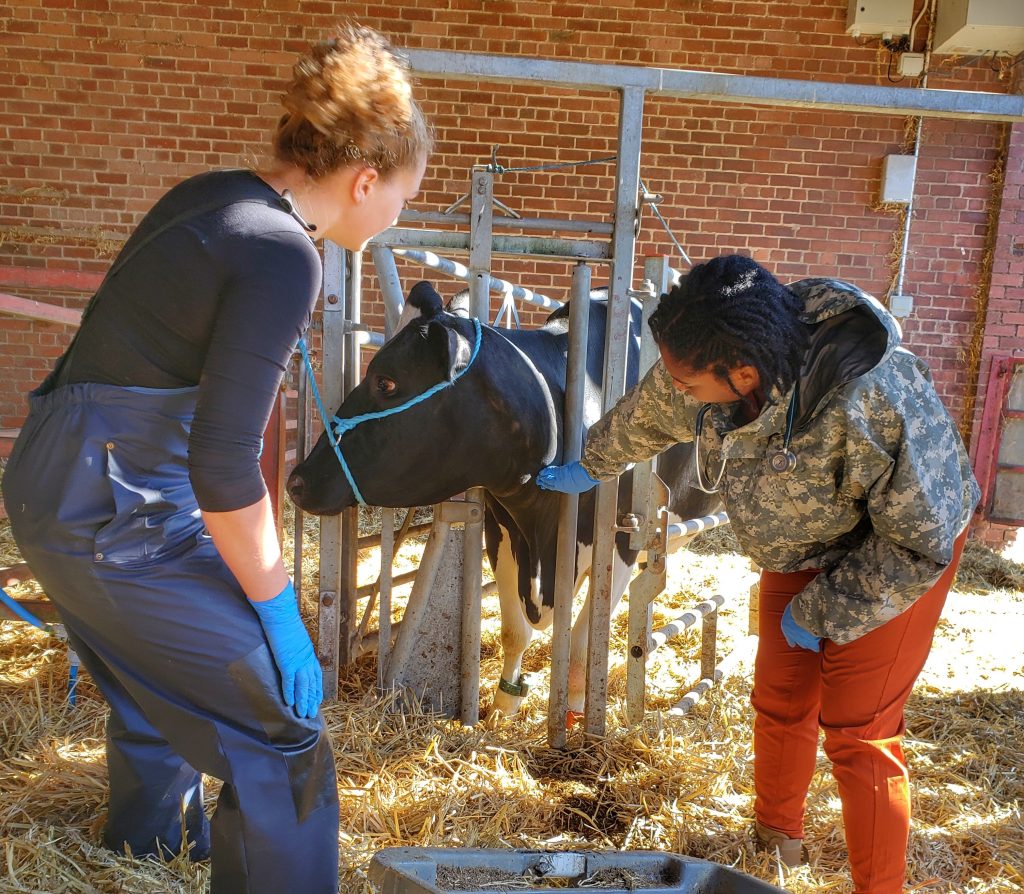
Veterinarians, animal care specialists, and veterinary food inspection specialists are also responsible for food and feed inspections, ensuring that local manufacturers meet U.S. military standards. Calkins worked with UW and SRUC to ensure that the training addressed these topics and/or directly translated into working with military dogs.
During their time at SRUC, the soldiers spent two days working with sheep; on the third day, they visited SRUC’s teaching dairy, where they learned to handle and milk cows. “It was really intentional to facilitate hands-on learning,” Scasta explains. “We didn’t want to just be in a classroom and lecture these folks.”
The instructors took what Stewart describes as a holistic approach, complementing animal handling exercises with case studies and prompting soldiers to consider livestock care as part of a larger integrated system.
“We got to work with armed forces, which is special to begin with,” he says. “Even cooler, we got to teach them about livestock stakeholders worldwide—how they sustain rural communities and why it’s important to know how to feed and care for these animals.”
He and Scasta started by discussing how environmental factors can affect an animal’s health. Next, they segued into how to safely handle large animals, keeping in mind that some soldiers had never interacted with livestock before.
Under the guidance of UW and SRUC instructors, the soldiers also performed physical examinations, focusing on how to take basic vitals and recognize common issues in feet, eyes, ears, and udders. Next, they practiced specific diagnostic techniques, such as using microscopes to inspect fecal samples for parasites.
For some participants, particularly veterinarians, the content was familiar; for others, getting in a pen or stall was a completely new experience. “We were teaching soldiers [and noncommissioned officers] that may not have a college degree or any level of post-secondary education, clear up to veterinarians. We integrated everybody’s knowledge,” says Stewart.
Leadership lessons
The training was a valuable learning experience not just for the soldiers, but also for the UW faculty members. “I really appreciated teaching a diverse set of stakeholders that had different baselines,” Stewart reflects. “It absolutely has enhanced how I teach in the classroom and with producers and extension people.”
The two UW educators were also impressed with the high standards for leadership and accountability upheld by soldiers of all ranks, from technicians to senior veterinarians like Calkins. “Leadership is at the forefront of everything they do,” says Scasta. “They facilitate constructive criticism at all levels but also hold high expectations within ranks. I think there’s a lot the academic institution can learn in that regard.”
Both he and Stewart were especially struck by the value of after-action reviews, structured discussions about each day’s successes and challenges. “That’s the beauty of the Army model,” says Stewart. “Every edition is iterative and we get better as we go.”
Based on pre- and post-evaluation feedback from participants, the training was a success. In recognition of their contributions, Scasta and Stewart were each honored with a civilian service award from the U.S. Army.
“They seemed to value having university ag folks there,” Scasta comments. “I see a lot of potential for synergy and collaboration.”
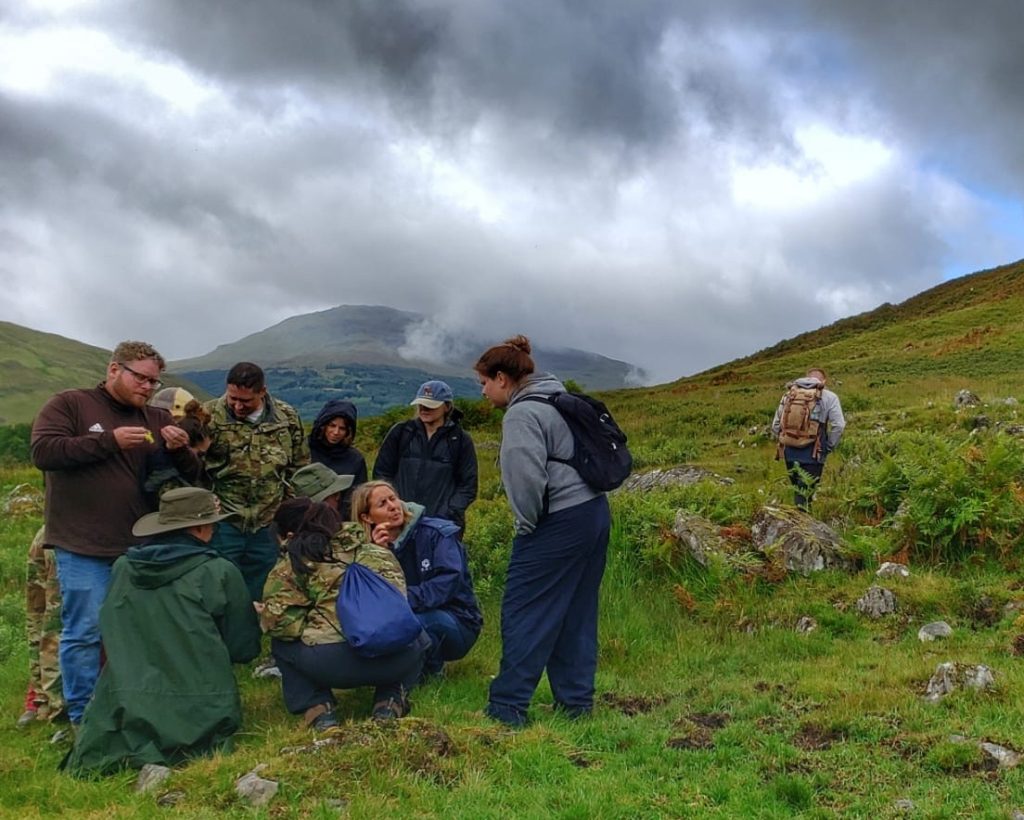
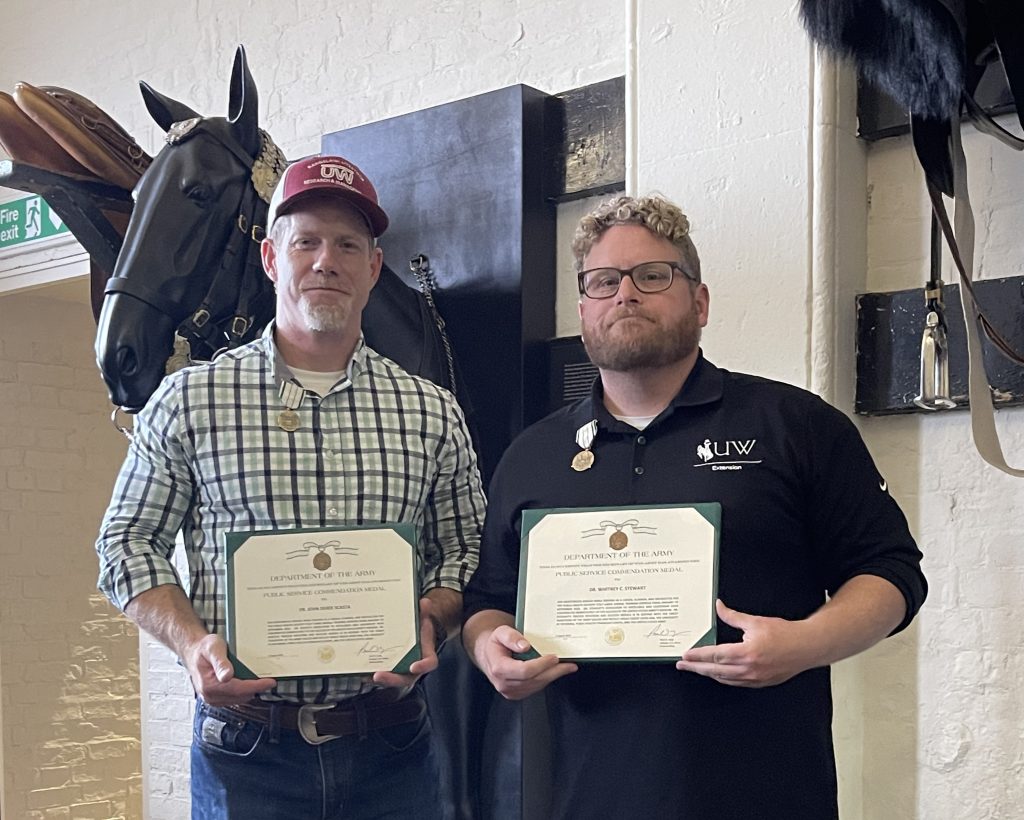
Continuing the collaboration
Inspired by the success of the Scotland training, Calkins and the UW team are considering hosting a similar program in Laramie.
Coordinating international logistics is no small feat, but UW has a lot to offer when it comes to livestock handling and care. While SRUC provided an excellent venue and co-instructors, due to licensing requirements, the soldiers were unable to perform blood tests on the livestock they handled. Hosting a similar training in Wyoming would allow soldiers to practice this key skill, potentially with hundreds of animals.
In addition to the facilities at the Laramie Research and Extension Center, the UW Meat Lab would provide an opportunity for soldiers to learn firsthand about meat processing.
Uniquely Wyoming
Regardless of what the next training might look like—or where it might be held—the program in Scotland forged a unique and mutually beneficial relationship between the U.S. Army and the University of Wyoming.
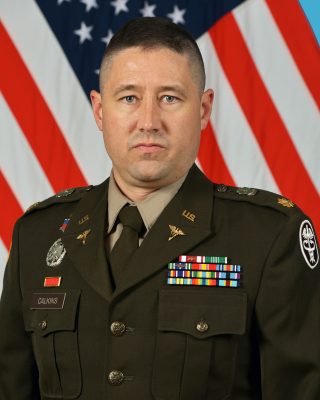
“For Craig to reach out and invite us and recognize we could do something special in a very unique Wyoming way—I think that speaks to one of the things we’re good at here at UW,” says Stewart. “We can make things happen.”
It’s also a testament to Major Calkins, he and Scasta agree. Whether moving cattle at the Laramie R&E Center or handling sheep in Scotland, their former student consistently models discipline, integrity, and a good-natured willingness to do what needs to be done.
“I think Wyoming should be really proud of someone like Craig,” Scasta comments. “He’s the best of Wyoming in many ways.”
As for Calkins, Wyoming will always be home. “I will never forget where I’m from and what the state has provided me,” he says. “I think you can leave Wyoming, but Wyoming will always be with you. There’s always a resource I can reach back to and they’ll pull through.”



